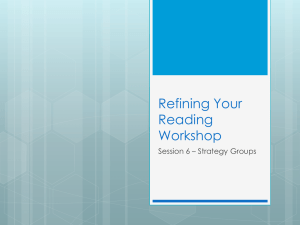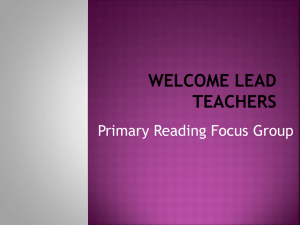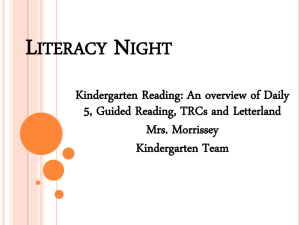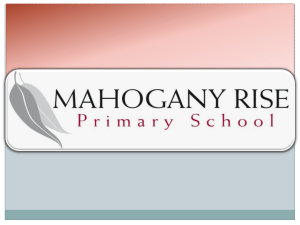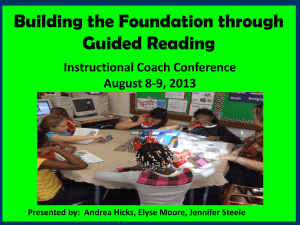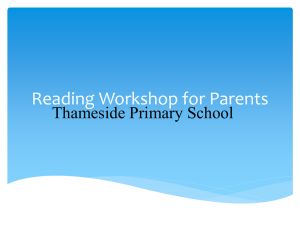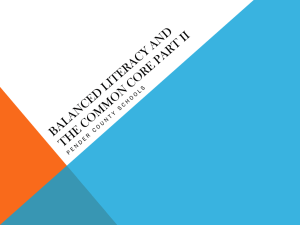Integrating LFS and guided reading
advertisement
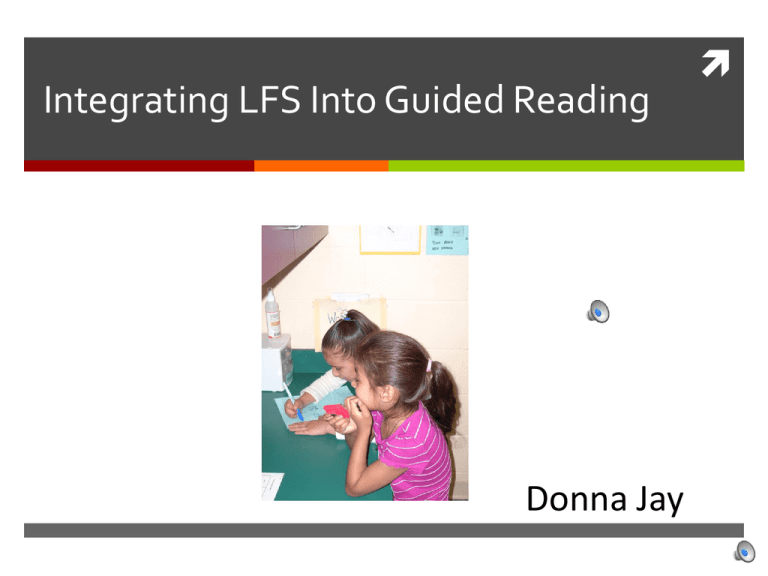
Integrating LFS Into Guided Reading Donna Jay What is guided reading? What is guided reading? Guided reading is small-group reading instruction designed to provide differentiated teaching that supports students in developing reading proficiency. The teacher uses a tightly structured framework that allows for the incorporation of several research-based approaches into a coordinated whole. For the student, the guided reading lesson means reading and talking (and sometimes writing) about an interesting and engaging variety of fiction and nonfiction texts. For the teacher, guided reading means taking the opportunity for careful text selection and intentional and intensive teaching of systems of strategic activity for proficient reading (Fountas & Pinnell, 1996). What is the purpose of guided reading? You select books that students can read with about 90 percent accuracy. Students can understand and enjoy the story because it’s accessible to them through their own strategies, supported by your introduction. They focus on meaning but use problem-solving strategies to figure out words they don’t know, deal with difficult sentence structure, and understand concepts or ideas they have never before encountered in print. What are the elements of guided reading? Although teachers utilize various approaches to guided reading, the following elements are a part of most guided reading sessions: Teachers select books for groups rather than following a rigid sequence. Groups are dynamic; they change in response to assessment and student need; they are flexible and fluid. In all groups, no matter what the level is, teachers teach for a full range of strategic actions: word solving, searching for and using information, self-monitoring and correcting, summarizing information, maintaining fluency, adjusting for purpose and genre, predicting, making connections (personal, other texts, and world knowledge), synthesizing, inferring, analyzing, and critiquing (Pinnell & Fountas, 2008a). What does research say about guided reading? All teaching in guided reading lessons has the ultimate goal of teaching reading comprehension. In guided reading, teachers provide specific demonstrations and teaching of comprehension strategies such as inferring, synthesizing, analyzing, and critiquing. Teachers prompt readers to think and talk in these strategic ways. This kind of teaching is supported by research. The National Reading Panel (NICHD, 2000) has suggested that teaching a combination of reading comprehension techniques is highly effective in helping students recall information, generate questions, and summarize texts. http://teacher.scholastic.com/products/guidedreading/pdfs/ GR_Research_Paper_2010.pdf Video http://toolbox.learningfocused.com/lfdirect/html/L FS_Overview_1b.html How does guided reading and LFS mesh together? The E.A.T.S model and guided reading can be integrated together! Essential Question – This can be given to the whole group of students to focus the purpose of the guided reading instructional time and literacy workstations around one common comprehension skill (story mapping, fantasy/realism, cause/effect, prediction, etc). A short mini-lesson reviewing the comprehension skill can also follow. Students who are not working with you in small groups will be working at literacy stations or independently to answer the same essential question as presented to the whole group. How does guided reading and LFS mesh together? Activating Strategy This can be done in your small guided reading group. Any activating strategy that works appropriately with the chosen text you selected is great (link to prior knowledge, link to what will be learned in the lesson…must be motivating!) As with any other lesson, selecting the appropriate activating strategy can set the stage for learning. Teaching Strategies These can be in the form of graphic organizers, or any other tool that works both with the selected text and the comprehension strategy for which you are focusing the lesson. Students must be able to apply their learning during the lesson. Assessment prompts are useful to check for understanding throughout the lesson. How does guided reading and LFS mesh together? Summarizing Strategies Distributed summaries, exit tickets, etc. can be utilized in the small group guided reading lesson to review if students comprehend the essential question of the lesson. When all small group instruction time is over, gather all students together and summarize in another way for the whole group, making sure that students at literacy stations also have a level of understanding of the essential question. How does guided reading and LFS mesh together? Extending Thinking Activities Literacy stations are a great means to integrate extended thinking activities. Choose the appropriate thinking strategy (comparing, classifying, induction, deduction, error analysis, constructing support, abstracting, or analyzing perspectives) for your students and apply it to a literacy station. Can this really work? YES! With just a few changes, you can integrate guided reading and LFS together! Questions?

